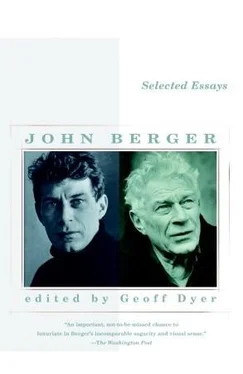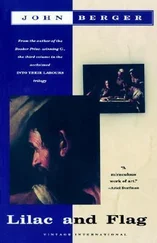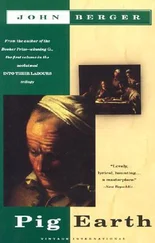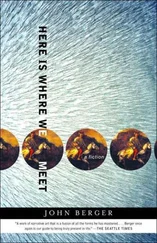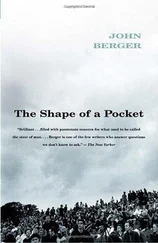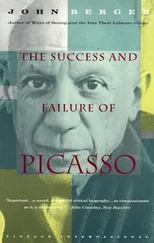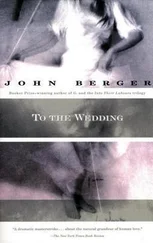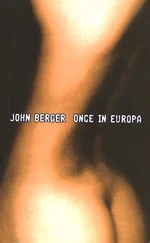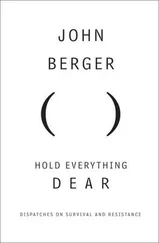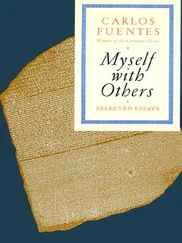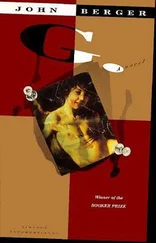Lipchitz would be the first to admit that he was formed by Cubism. Indeed, from 1913 for about ten years he produced sculpture which looked very like early Cubist paintings: the same scrolly shapes, sharp edges, lack of depth, and even the same subjects. These were the works of his apprenticeship. Mostly they fail as sculpture. The forms have been taken too directly from painting. They look like canvases seen through stereoscopic spectacles. But from the middle twenties Cubism ceased to be a matter of style for him, and became a question of imaginative vision. Some of his new works were open wire-like sculptures; others were massive figures, a little like the sculptural equivalent of Léger’s, with surfaces sometimes polished and sometimes very broken-up. All, however, were metaphors in movement.
I fear that that is an obscure phrase but perhaps I can clarify it by an example. There is a large work of a pair of lovers on the ground. The forms are very severely simplified. There are no hands, no feet, no faces. One mass presses down on another. Their four legs have become two simple forms — a little like the front wings of a car. The man’s arms connect two shoulders — his own with hers. Their heads, both bent backwards from the chin, form a shape like an open beak, his the top bill and hers the bottom. In profile the whole work looks somewhat like a tortoise — the shell their two bodies — raising itself up on its legs. But its spirit is not in the least zoomorphic. It is cast in bronze and its forms are metallic. Just as much as a tortoise, it also suggests a fulcrum, levers and counter-weights. Its distortions and simplifications have not been governed by the material as in Moore, nor by emotional urges and fears as in Marini; they have been very carefully derived from the objective structural stresses and movements of the subject. Hence the energy of the work. It springs from its own base. Rodin, whom Lipchitz much admires, was also concerned with movement, but for Rodin the movement of a figure was something that happened to it. For Lipchitz, concerned with processes rather than substances, and looking in imagination from multiple viewpoints, movement is the very mode of being for his figures.
Poetically this means that he conjures up allusions to all forms of movement: to the wind, to animals, to fire, to plants opening, to gestation. His refugees fall like stones from a collapsing building; Prometheus strangles the vulture (an intended symbol for Fascism) as wind strangles a flame. His happy figures are like new boats on the stocks. Orpheus rediscovers his love and they are like two clouds in the sky.
Ideologically it means that he is in a position to make the truthful symbols of our time. Speed is rightly — but not just in the sense of travelling fast — our special concern. We aim to set processes in motion. Only gods are static. And historically it means that Lipchitz has learnt, when he is at his best, the lessons of Cubism: has learnt to control the spin and produce a modern rational art.
1959
In May 1940 the centre of Rotterdam — including, among other buildings, 25,000 homes — was bombed to rubble. It was the second European city to be a victim of the German policy of extermination bombing. Warsaw was the first.
On the waterfront of the new city there now stands Zadkine’s monument to the ordeal of the old city. It is a reminder of which the citizens of Rotterdam are almost unanimously proud. It is a memorial which can shame those Germans capable of admitting shame. It is an inspiration in the struggle for progress and peace. And quite apart from this, it is — in my opinion at least — the best modern war monument in Europe.
You can only see it properly by walking round it on foot. It stands by itself, well away from any road or large building, overlooking the harbour. Although near the centre, this is one of the few quiet, still places in the modern city. You walk round the plain granite block on which the figure, cast in dark bronze, simultaneously stands, dies and advances. The scale is big. Two or three large gulls can perch on the hand that appears to be flattened against the surface of the sky. Between the outstretched arms the clouds move. A ship’s siren sounds on the other side of the water, and you think of the largest anchor, but buckled, and trailing not over the sea bed but over those moving clouds. At night it is different. It becomes a silhouette, less symbolic and more human. Shadows, which are half the visual language of sculpture, are obliterated. Only the gesture therefore remains. A man stands, arms raised to hold off an invisible load between him and the stars. Then in the early morning you see again the lime of the gulls and the dead fixed texture of the massively cast bronze in contrast with the bright, crinkling surface of the water. Thus the sculpture changes with the time of day. It is not a passive figure with a corrugated cloak waiting to be benighted, lit up, scorched and snowed upon until it becomes no more than the unmeltable core of a snowman. Its function and not just its appearance depends upon the hours. It engages time. And the reason for this is that its whole conception as a work of art is based on an awareness of development and change.
But first let me admit that there is one very weak passage in this work: the tree stump by the side of the figure. An upright form is necessary there to support the figure, but both the shape and the associations of a tree stump are quite unsuitable: like a potato by the side of a crystal. However, it is almost possible to ignore this. It is not part of the figure and it is not part of the work’s true image.
What is the meaning of this image? Or, rather, what are the meanings? — for it is the fact that this work has simultaneous meanings that allows it to express development and change so well. The figure represents the city. And the first dominant theme is that of the city being ravaged, razed. The hands and the head cry out against the sky from which the man-aimed bombs fall. I say man-aimed because this makes the anguish sharper and fiercer than that of an Old Testament prophet crying out against the wrath of his god, and this extra anguish partly explains, I think, the violence of the distortions in modern tragic works like this. The torso of the man is ripped open and his heart destroyed. The wound is not portrayed in terms of flesh. The man represents a city, and the sculpture is of bronze and so the wound, which in fact is a hole right through the body, is seen in terms of the twisted metal of the burnt-out shell of a building. The legs give at the knees. The whole figure is about to fall.
The second theme is very different. This is also a figure of aspiration and advance. The heart is ripped out, but the arms and hands are not only held high in anguish and a vain attempt to hold off, they also raise and lift. The legs not only give at the knees, they also bend because they are steady. And from every direction as you walk round this figure, the step appears to be forwards. The figure has no back — and so cannot retreat. It advances in every direction (and do not think I am now talking metaphorically; I am being quite literal). On the site of the old city a new one was to be built. One week after the German attack, plans were made to rebuild Rotterdam after the Germans were eventually driven out. And so the curses also become a rallying cry.
How does the work achieve this duality? Not by philosophic dualism, not by separating the spiritual from the physical — as in certain crucifixions where the body of Christ is tortured and the expression of his face peaceful and triumphant. This is a work which is uncompromisingly physical and the basis of its double meaning is a material one. First, the statue has an existence and logic of its own. It is not imitative. It is a piece of bronze demonstrating something and it does not disguise the fact that it is a piece of bronze: its forms are metallic in both shape and tension. This allows it to express the content of one moment — the moment of dying or the moment of resurrection — whilst not being exclusively committed to that moment; it also clearly remains a piece of bronze on the waterfront at Rotterdam in 1960. Thus its formalizations become the equivalent of a historical perspective: they do more than generalize, they allow for change. Yet by itself this is a dangerous principle to work upon because it can lead to that kind of abstraction which ‘contains’ any meaning because it actually has none. Formalizations governed by the material of the work in question must always be modified and checked by observation of the reality of the subject. And this is the second way in which the basis of the double meaning of this work is a material one. It is not by magic that Zadkine has modelled a figure which simultaneously advances and collapses; it is by learning from the methods of Cubism. He now knows what is constant in all the ways in which a body can move and retain its balance. He can sense the points of physical coincidence between a man falling and a man going forwards. (Who has not mistaken laughter for weeping, a gesture of affection for one of attack?)
Читать дальше
